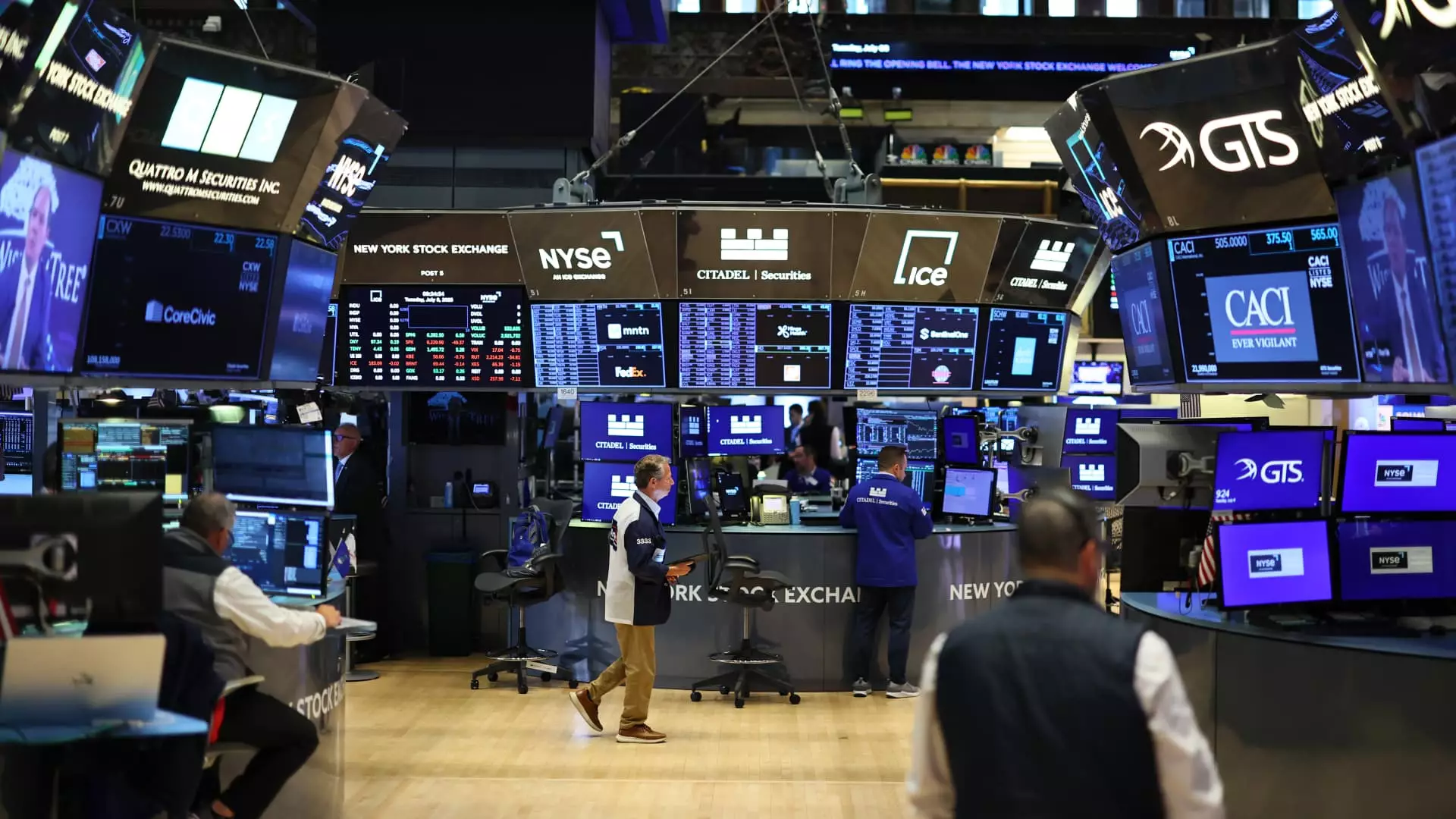In an era of unprecedented market flux, investors are compelled to reevaluate their strategies with a keen eye and an open mind. The forecasts from industry leaders suggest a subdued outlook for the stock market in the coming months, casting a shadow of caution over traditional growth-centric approaches. However, rather than viewing this as purely a period of downturn, these predictions underscore the importance of agility and strategic positioning. Market analysts warn of looming slowdowns, rising inflation, and a cooling labor market, but this environment also creates fertile ground for tactical investments that could payoff significantly as the cycle turns.
The core message emerging from experts like Vanguard’s Roger Hallam emphasizes the significance of diversifying into fixed income assets. While equities often dominate investors’ minds, in a mechanically cooling economy, bonds and other fixed income instruments could become the anchors that stabilize portfolios. The anticipated resilience of bonds—especially U.S. Treasurys—stems from monetary policy shifts aimed at safeguarding employment while subtly easing inflation pressures. This transition period warrants a cautious yet optimistic stance: by increasing exposure to bonds now, investors may position themselves to capitalize on a future decline in interest rates and bond yields, thus enhancing overall returns.
The Power of Fixed Income: A Strategic Priority
As the Federal Reserve navigates its balancing act between controlling inflation and supporting jobs, the outlook for fixed income remains robust. Vanguard’s recent launch of government bond ETFs, including the Vanguard Government Securities Active ETF, exemplifies this shift towards safety and stability. These funds are heavily concentrated in U.S. Treasurys, which historically serve as a safe haven during turbulent times. The downward trend in yields—from 4.57% at the start of 2025 to roughly 4.4%—illustrates a market edging toward more favorable bond valuations. Investors eyeing the next six months should consider increasing their holdings in secure bonds, viewing them as both protection and potential for appreciation should interest rates decline further.
However, the emphasis on fixed income should not be solely about safety; it embodies a strategic move to hedge against the volatility inherent in equities during economic slowdown phases. The upcoming months may see central banks pivot towards more accommodative policies, providing a tailwind for bonds. This could translate into capital gains for bondholders and a stabilizing effect on diversified portfolios. Notably, this trend urges investors to think beyond mere preservation, tapping into the opportunities presented by fixed income’s capacity to generate income and buffer against unforeseen shocks.
Embracing Innovation and Macro Trends
While defensive strategies dominate the current dialogue, forward-looking investors are also encouraged to consider tactical exposures aligned with powerful macro themes. BlackRock’s approach advocates for a “barbell” strategy—combining conservative bond holdings with selective equity plays that offer growth potential. Buffer ETFs exemplify this philosophy, providing downside protection while still enabling upside participation. One such fund, the iShares Large Cap Max Buffer ETF (MAXJ), has already earned a 5% return in 2025 and offers a capped upside, which is particularly appealing in uncertain markets.
This balanced approach is not merely about risk mitigation; it’s about actively positioning for the future. The rise of sectors like artificial intelligence and infrastructure indicates where capital can go to gain leverage. Jacobs from BlackRock stresses that macro trends—such as infrastructure development fueled by U.S. domestic growth and geopolitical shifts—are vital avenues for investors seeking to capitalize on broader economic transformations. In this context, those willing to diversify their assets and explore innovative investment vehicles stand a better chance of not just weathering storms but emerging stronger.
Redefining Investment Discipline in Volatile Times
Ultimately, the current market environment necessitates a mindset shift. The days of chasing high-growth stocks without regard for valuation or macro conditions are fading into history. Instead, strategic investors recognize that periods of volatility can create new opportunities—if approached thoughtfully. The emphasis on fixed income, tactical ETFs, and macro-driven themes underscores the importance of disciplined diversification.
Crucially, the ongoing assessment of market conditions should be relentless. Every economic indicator, policy change, or geopolitical event acts as a cue for adjusting holdings. The key is to strike a balance—leveraging the security of bonds while remaining agile enough to seize emerging advantages from technology, infrastructure, or other growth sectors. In doing so, investors not only protect their capital but set the stage for long-term success, even amidst uncertainties that seem daunting at first glance. The strategic shifts being recommended today are not merely reactions to a forecasted slowdown—they are proactively shaping the resilience and growth potential of tomorrow’s portfolios.

